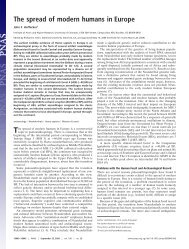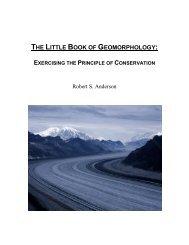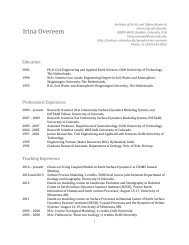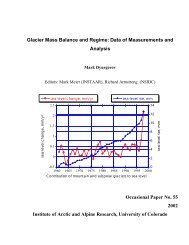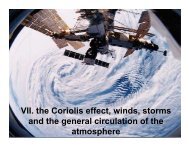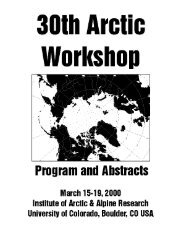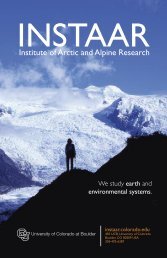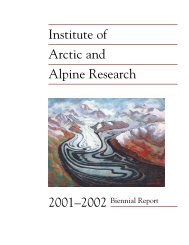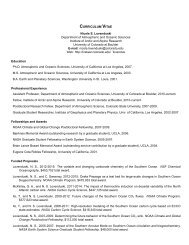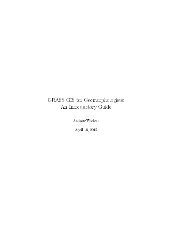Economic Feasibility Study of Colorado Anaerobic Digester Projects ...
Economic Feasibility Study of Colorado Anaerobic Digester Projects ...
Economic Feasibility Study of Colorado Anaerobic Digester Projects ...
Create successful ePaper yourself
Turn your PDF publications into a flip-book with our unique Google optimized e-Paper software.
• Promotion <strong>of</strong> energy as a source <strong>of</strong> “green energy” to generate voluntary<br />
private payments that may fund the necessary infrastructure and program<br />
administration for AD technology.<br />
• Improved implementation <strong>of</strong> net metering practices.<br />
3.2.2 Permitting: The <strong>Colorado</strong> AD permitting process was noted by many technology<br />
providers as another significant barrier to AD projects, in terms <strong>of</strong> time and expense.<br />
Technology providers also reported inconsistencies in the application <strong>of</strong> rules towards<br />
different technology designs. However, compared to other western states, providers<br />
described <strong>Colorado</strong> has having a “mid-range” level <strong>of</strong> difficulty, and felt that improvements<br />
could be made to expedite the permitting process. Because the state permitting process is<br />
a regulation that GEO may be able to directly influence, more time was spent on<br />
researching how <strong>Colorado</strong> permitting practices compared to other neighboring states. A<br />
comparison between <strong>Colorado</strong> and other western states is provided in a dedicated<br />
“permitting” in Section 4.0. Two specific concerns that technology providers voiced about<br />
the <strong>Colorado</strong> permitting process are:<br />
• The perception is that the permitting process is difficult in <strong>Colorado</strong> for codigestion.<br />
This is particularly problematic since co-digestion is a key<br />
approach to improve AD feasibility.<br />
• There is a stigma associated with being labeled a “waste energy facility” on<br />
permitting applications. This stigma could result in a “NIMBY” perception<br />
with the general population.<br />
3.2.3 Operational and Technical <strong>Feasibility</strong>: A great deal <strong>of</strong> useful information about the<br />
technical feasibility <strong>of</strong> AD systems is available at the EPA AgStar website. In addition to<br />
these technical feasibility reports, technology providers identified areas that posed specific,<br />
timely operational issues for <strong>Colorado</strong> and suggestions <strong>of</strong> policies that could improve the<br />
operational feasibility <strong>of</strong> AD. These issues can be categorized into four general areas:<br />
A. Development <strong>of</strong> Technology to Overcome High Solids Content Waste: High solids<br />
content waste is a major barrier that has been identified as unique to <strong>Colorado</strong> and<br />
the arid western United States. Technology providers consistently noted that<br />
research dollars spent to study methods for overcoming high solids content waste<br />
may provide considerable payback for future implementation <strong>of</strong> AD technology in<br />
the state <strong>of</strong> <strong>Colorado</strong>. At the moment, private funding for high solids content<br />
research may not yield economic returns for industry, but research conducted at the<br />
<strong>Economic</strong> <strong>Feasibility</strong> <strong>Study</strong> <strong>of</strong> <strong>Colorado</strong> <strong>Anaerobic</strong> <strong>Digester</strong> <strong>Projects</strong><br />
Prepared by Dr. Catherine Keske, <strong>Colorado</strong> State University<br />
August 2009<br />
Page 14 <strong>of</strong> 79



